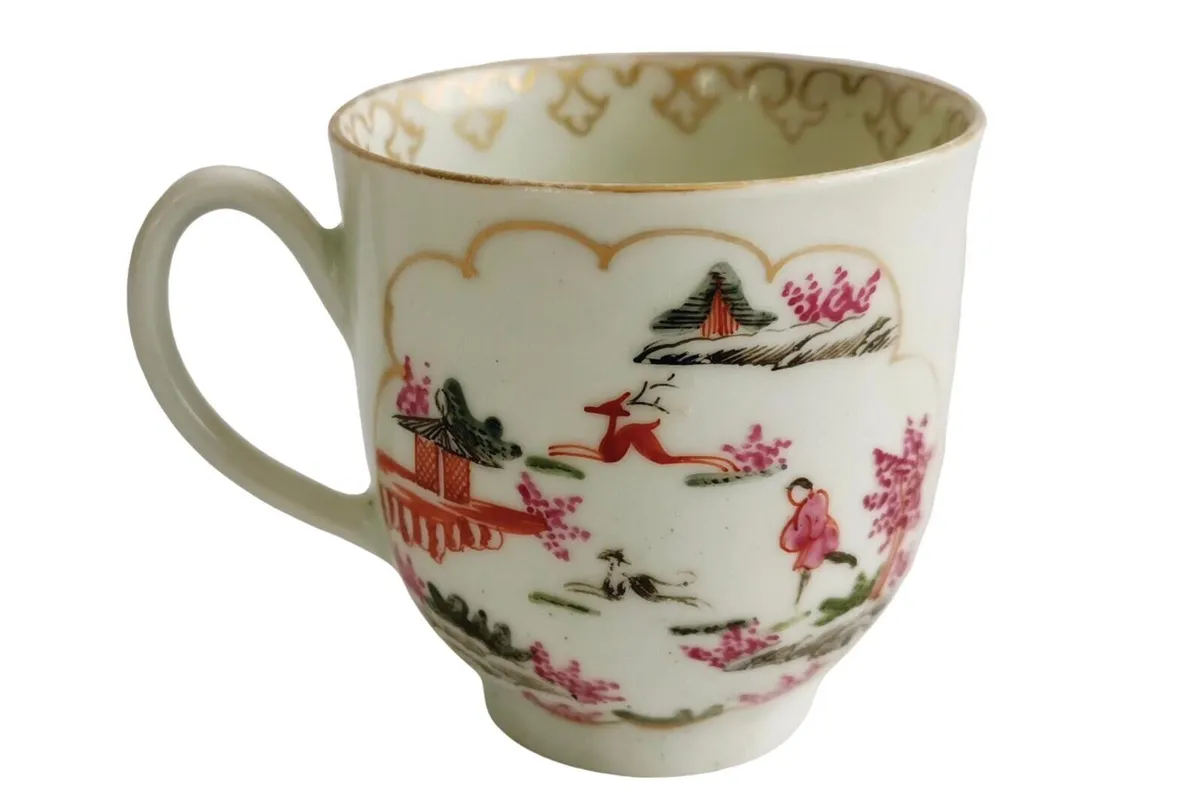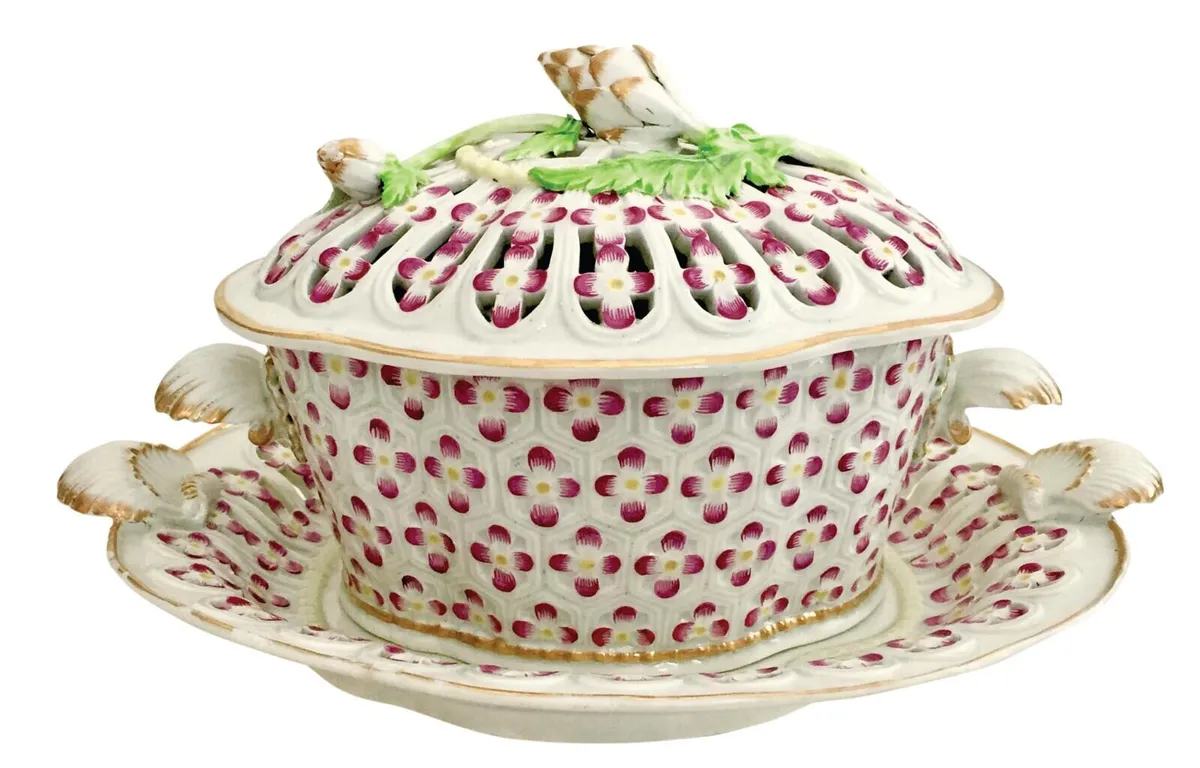On our journey through the history of British porcelain, our most recent stop was Derby, which by about 1770 had taken over from the pioneering large factories in London. But Derby wasn’t the only rising star; just under 80 miles away, in Worcester, people were busy working on the development of their own porcelain.
It all started when Dr John Wall, a physician, realised in the 1740s that the lead-glazed vessels that people drank cider from made them ill. He did pioneering research into lead poisoning and it motivated him to find a new, safer material to drink from. Naturally enough, he turned to porcelain, which was taking Britain by storm, and started experimenting in the kitchen of his friend, the apothecary William Davis. In 1751, the two men partnered with a group of investors to set up the Worcester Porcelain Company.
The founding articles mention that the company was created for the purpose of ‘discovering a secret recipe’. And as we will see, while the Derby factory was all about design, Worcester, although it always created beautifully designed pieces, focused on finding a perfect porcelain body for drinking liquids.
They ended up not needing to discover a recipe, however; instead, they bought the failed Bristol factory from Benjamin Lund in 1752, including its moulds, workers and porcelain recipe. An important innovation was that Lund’s recipe included soap rock. Soap rock makes porcelain more plastic, which proved better for vessels that need to resist hot liquid – remember the complaints about cracked Derby teapots? So Worcester jumped on the new trend for teaware – and, importantly, coffee cups.

The Chinese didn’t drink coffee, so tea sets imported from China often lacked coffee cups, and Worcester started making huge numbers in all the popular Chinese designs to complement. Similarly, the Chinese didn’t understand sauce and gravy, so their pretty sauce boats were usually dysfunctional, as they didn’t pour properly. Again, Worcester filled that void by churning out sauce boats in every possible design.
Designs from the first few years were in the Chinese style, but in the mid-1750s the flowery Meissen style was added. Worcester also discovered the art of transfer printing, which started a huge variety of cheap but beautiful blue-and-white designs; transfer prints could be perfectly applied by the little fingers of children, a much cheaper workforce. There were flowers, fruits, decorative rims and elaborate Rococo images of very English tea parties in neoclassical landscapes with Roman ruins, like the toile fabrics of that era.

We have seen how Chelsea, Bow and Derby all followed the same styles: first chinoiserie, then Meissen flowers, and later the French Sèvres style. Worcester, having started production some 10 years later, always remained a decade behind that curve.

While Bow was making its bold ‘powder blue’ plates in the 1750s, Worcester started these around 1760. Chelsea made German-inspired flower designs by 1745 and Worcester followed around 1755. The French Sèvres style was already famous at Chelsea in the late-1750s, which Worcester arrived at in 1768.

This meant, however, that every time Worcester embraced a new style, they could use the latest technology and the result was stunning. If you walk through the famous collection at the Ashmolean Museum in Oxford, it is like being taken on an exhilarating tour through the styles of the 18th century, dazzling in their beauty and exuberance, superbly executed.
Some of this splendour was not produced at Worcester, though. Dr Wall had a retainer with the influential design studio of James Giles in London, who worked for various factories. There is a wonderful crossover of styles; it can be tricky to determine whether a piece was made entirely at Worcester, decorated by Giles, perhaps made at Derby, or even Chelsea-Derby!
James Giles had a large decorating studio in London. He bought stock from Derby, Worcester and others, but also decorated for these factories. Dr Wall became increasingly nervous about Giles’s success and the crossover with other factories, and he shrewdly ended the contract in 1771, leaving Giles in a vulnerable position.
Being more of an artist than a business leader, Giles had to sell his stock in 1774 and, in 1776, he closed due to bankruptcy. William Duesbury at Derby, who had already cannibalised Chelsea and Bow, and Dr Wall at Worcester, poached most of the porcelain decorators. This enabled them to considerably strengthen their own workforces. Just like today, the world of business was cut-throat!
